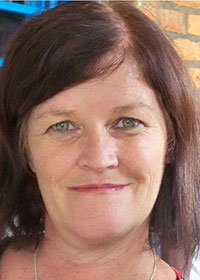“This is an important time for education in Rwanda; there are a number of ambitious policies and initiatives leading the way forward,” noted Dr. Murigande (ESSP 2010-2015).


"This is an important time for education in Rwanda; there are a number of ambitious policies and initiatives leading the way forward,” noted Dr. Murigande (ESSP 2010-2015). From the seven main priorities of the ESSP (2010-2015), educational quality continues to improve and developing a skilled and motivated teaching, training and lecturing workforce, are pillars in ensuring academic excellence.
Recently, Rwanda Education Board (REB) discontinued the practice of grading schools based on students’ academic performance in national exams in order to overcome the poaching of teachers and the mass school hopping. The policy also refers to ‘Academic Effectiveness’ in describing child-friendly schools. Is all this however the benchmark to measuring academic excellence? What is the difference between academic effectiveness and academic excellence? Does academic excellence rely on quality teaching for quality learning to take place?
The present structure of the education system does students a tremendous injustice by not delivering the quality schooling we are capable of. National examinations play a role in education, but a score on a test will not help the student when he or she is competing for a job with someone from Kenya, Uganda, China or India.
What is important is that students enter the global economy with the ability to apply what they learned in school to a variety of ever-changing situations that they couldn’t foresee before graduating. That is the mark of quality education and a dependable indication of academic excellence.
International research reveals that, while having all students achieve academic proficiency is a worthy goal, it should be only the starting line. National examinations have become so "highly ranked” that classroom instruction is geared towards the sole purpose of passing them. In this respect, national examinations have become the finish line. The student’s ability to apply high-rigor knowledge in a relevant, real-world setting needs to be the true finish line; instead, it has become an afterthought.
Education should increase students’ understanding of the world around them. Unfortunately, there is little or no connectivity or integration between subjects and grades in most Rwandan schools. As students move from class to class and progress to the next grade, they are exposed to isolated bits of content-specific knowledge, but they are not taught how what they learn in one class relates to another or its application in the world outside of school.
It is suggested by Dr. James Ladwig and Prof. Jenny Gore from the University of Newcastle, Australia that quality teaching for quality learning is what produces academic excellence. Together they proposed a model of pedagogy — Quality Teaching Model (QTM) — which embraces three dimensions and 18 elements which can be applied from nursery, P1 and up to S6.
The first dimension is intellectual quality and is broken as being deep knowledge, deep understanding, problematic knowledge, higher-order thinking, metalanguage and substantive communication. The second dimension — quality learning environment — consists of explicit quality criteria, engagement, high expectations, social support, students’ self-regulation and student directed. The final dimension is significance which includes background knowledge, cultural knowledge, knowledge integration, inclusivity, connectedness and narrative.
The point of the QTM is that in every lesson, a teacher must include all the 18 elements in order to produce quality learning which in turn produces academic excellence. However, the correlation between teaching and learning is part of producing academic excellence. Active learning requires an active mind and an active body. A healthy and active lifestyle simply must exist in order that a student achieves academic excellence.
Student learning is enhanced by an understanding that health is the responsibility of all parts of society. Through promoting the fundamental principles of diversity, social justice and supportive environments, individuals and communities are better able to act for positive health outcomes. Knowledge and understanding plus skills and values and positive attitudes lead to healthy, active and fulfilling lives. It is not a case of either/or; academic effectiveness plus healthy minds and bodies, equals and produces academic excellence.
The writer is the deputy principal, Riviera High School


